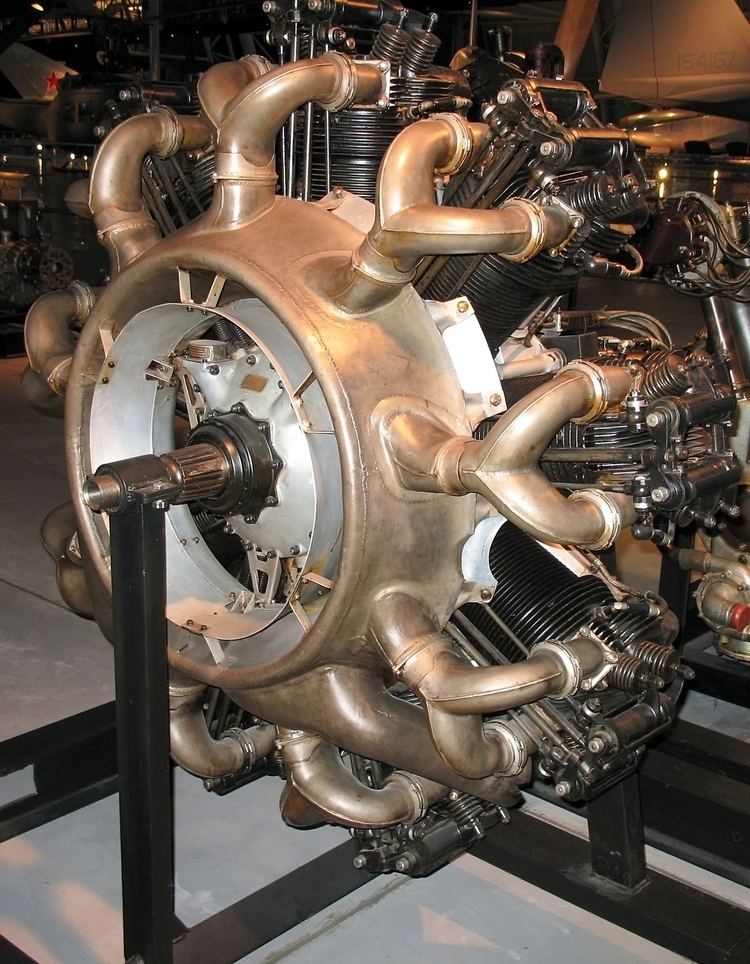 | ||
The Bristol Jupiter was a British nine-cylinder single-row piston radial engine built by the Bristol Aeroplane Company. Originally designed late in World War I and known as the Cosmos Jupiter, a lengthy series of upgrades and developments turned it into one of the finest engines of its era.
Contents
- Design and development
- Licensed production
- Variants
- Applications
- Cosmos Jupiter
- Gnome Rhne Jupiter
- Shvetsov M 22
- Engines on display
- Specifications Jupiter XFA
- General characteristics
- Components
- Performance
- References
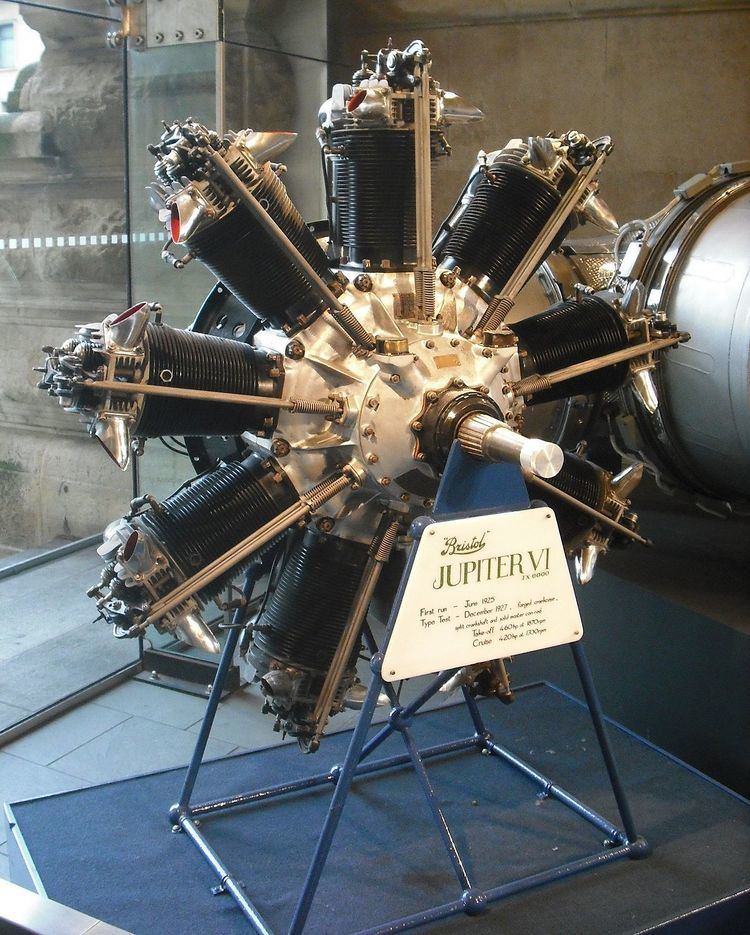
The Jupiter was widely used on many aircraft designs during the 1920s and 1930s. Thousands of Jupiters of all versions were produced, both by Bristol and abroad under licence.
A turbo-supercharged version of the Jupiter known as the Orion suffered development problems and only a small number were produced. The "Orion" name was later re-used by Bristol for an unrelated turboprop engine.
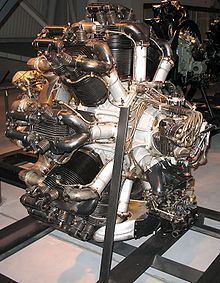
Design and development
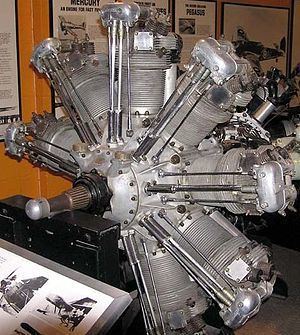
The Jupiter was designed during World War I by Roy Fedden of Cosmos Engineering. During the rapid downscaling of military spending after the war, Cosmos became bankrupt in 1920, and was eventually purchased by the Bristol Aeroplane Company on the strengths of the Jupiter design and the encouragement of the Air Ministry. The engine matured into one of the most reliable on the market. It was the first air-cooled engine to pass the Air Ministry full-throttle test, the first to be equipped with automatic boost control, and the first to be fitted to airliners.
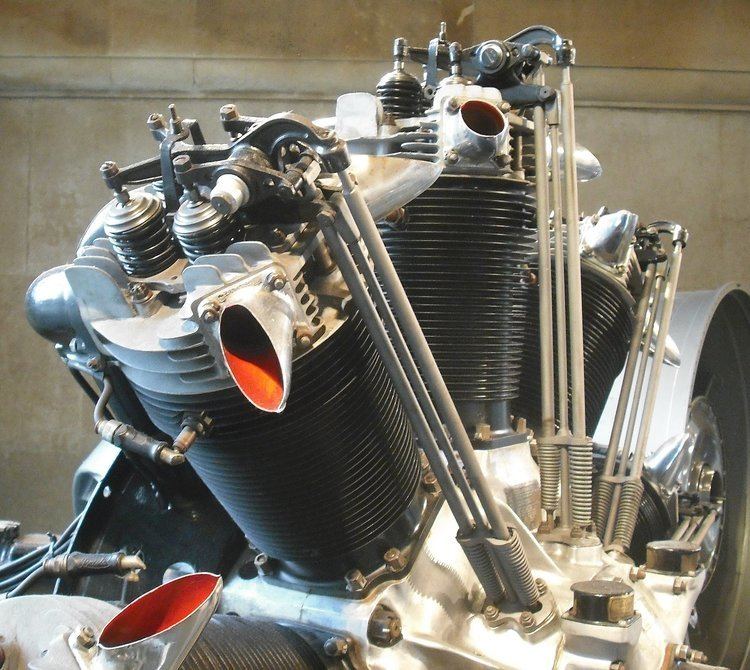
The Jupiter was fairly standard in design, but featured four valves per cylinder, which was uncommon at the time. The cylinders were machined from steel forgings, and the cast cylinder heads were later replaced with aluminium alloy following studies by the RAE. In 1927, a change was made to move to a forged head design due to the rejection rate of the castings. The Jupiter VII introduced a mechanically driven supercharger to the design, and the Jupiter VIII was the first to be fitted with reduction gears.
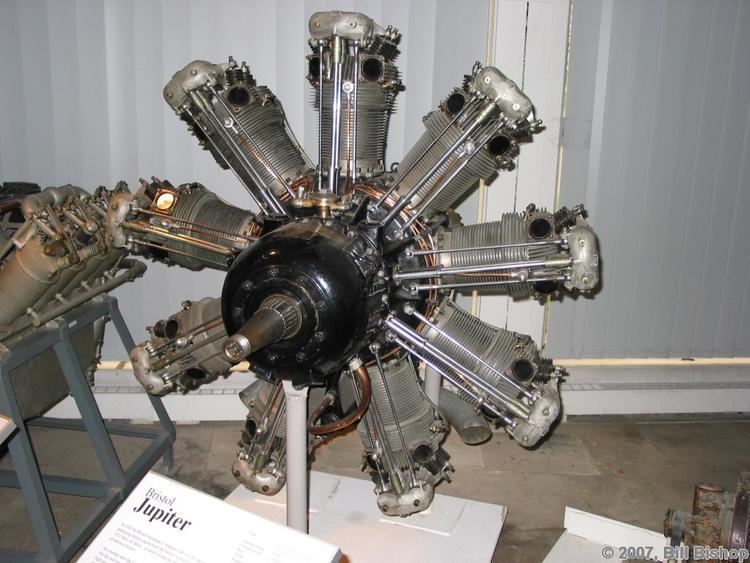
In 1925, Fedden started designing a replacement for the Jupiter. Using a shorter stroke to increase the rpm, and including a supercharger for added power, resulted in the Bristol Mercury of 1927. Applying the same techniques to the original Jupiter-sized engine in 1927 resulted in the Bristol Pegasus. Neither engine would fully replace the Jupiter for a few years.
In 1926 a Jupiter-engined Bristol Bloodhound, G-EBGG, completed an endurance flight of 25,074 miles, during which the Jupiter ran for a total of 225 hours, 54 minutes, without part failure or replacement.
Licensed production
The Jupiter saw widespread use in licensed versions, with fourteen countries eventually producing the engine. In France, Gnome-Rhone produced a version known as the Gnome-Rhône 9 Jupiter which was used in several local civilian designs, as well as achieving some export success. Siemens-Halske took out a licence in Germany and produced several versions of increasing power, eventually resulting in the Bramo 323 Fafnir, which saw use in German wartime aircraft.
In Japan, the Jupiter was licence-built from 1924 by Nakajima, forming the basis of their own subsequent radial aero-engine design, the Nakajima Ha-1 Kotobuki. It was produced in Poland as the PZL Bristol Jupiter, in Italy as the Alfa Romeo 126-RC35, and in Czechoslovakia by Walter Engines. The most produced version was in the Soviet Union, where their Shvetsov M-22 version powered the initial Type 4 version of the Polikarpov I-16 (55 units produced). Type 4 Polikarpovs can be identified by their lack of exhaust stubs, rounded NACA cowling and lack of cowling shutters, features which were introduced on the Shvetsov M-25 powered Type 5 and later variants (total production 4,500+ units). Production started in 1918 and ceased in 1930.
Variants
The Jupiter was produced in many variants, one of which was the Bristol Orion of 1926. Metallurgy problems with this turbo-supercharged engine caused the project to be abandoned after only nine engines had been built.
Applications
The Jupiter is probably best known for powering the Handley Page HP.42 Hannibal airliners, which flew the London-Paris route in the 1930s. Other civilian uses included the de Havilland Giant Moth and Hercules, the Junkers G 31 (which would evolve into the famous Ju-52), and the huge Dornier Do X flying boat, which used no less than twelve engines.
Military uses were less common, but included the parent company's Bristol Bulldog, as well as the Gloster Gamecock and Boulton Paul Sidestrand. It was also found in prototypes around the world, from Japan to Sweden.
By 1929 the Bristol Jupiter had flown in 262 different aircraft types, it was noted in the French press at that year's Paris Air Show that the Jupiter and its license-built versions were powering 80% of the aircraft on display.
Note:
Cosmos Jupiter
Gnome-Rhône Jupiter
Shvetsov M-22
Engines on display
A Bristol Jupiter VIIF is on static display at the Shuttleworth Collection, Old Warden, Bedfordshire.
Specifications (Jupiter XFA)
Data from Lumsden
